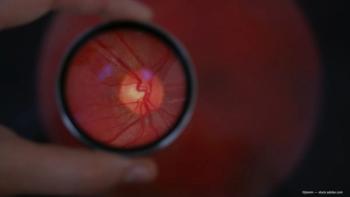
Flap size should be equal to the ablation zone during LASIK
Using a simple nomogram can substantially improve flap centration with a proprietary femtosecond laser. When considering the question of how big the LASIK flap should be, a large flap is good because ablation performed on the epithelium induces aberrations. A small flap, however, also is good because corneal strength is impaired less and less dry eye may be induced by the procedure, although the latter is still uncertain.
Key Points
Chicago-Using a simple nomogram can substantially improve flap centration with a proprietary femtosecond laser (IntraLase FS-60, Advanced Medical Optics), Uday Devgan, MD, reported on behalf of Robert K. Maloney, MD, at the annual meeting of the American Society of Cataract and Refractive Surgery.
When considering the question of how big the LASIK flap should be, a large flap is good because ablation performed on the epithelium induces aberrations. A small flap, however, also is good because corneal strength is impaired less and less dry eye may be induced by the procedure, although the latter is still uncertain, Dr. Devgan said. He practices at the Maloney Vision Institute, Los Angeles.
Dr. Devgan said that the ideal situation is having a flap size that is equal to that of the ablation zone.
To minimize the diameter of the flap, the flap should be centered on the pupil, Dr. Devgan said.
"The standard method of centering the [flap made by the femtosecond laser] is first to dock and then center the reticle on the apparent center of the pupil using the mouse," he said. "This is an easy procedure; however, this method results in consistent temporal decentration of the flap."
Mechanical microkeratomes also cause temporal decentration of the flap, Dr. Devgan said. This temporal decentration occurs because the microkeratome distorts the cornea as a result of applanation, he added.
In response to this problem, Dr. Maloney created the Maloney centration nomogram, Dr. Devgan said.
"The key point to remember is that if the pupil is centered perfectly, no clicks are required to correct the positioning of the flap," Dr. Devgan said. "We recommend six extra clicks to the left to move the flap from the baseline position and prevent temporal decentration. If the right eye is undergoing LASIK, we move the flap position slightly to the left and for the left eye slightly to the right."
He showed that, although the flap appears to be decentered on the femtosecond laser screen, when the flap is lifted, it is in fact very well centered.
Newsletter
Don’t miss out—get Ophthalmology Times updates on the latest clinical advancements and expert interviews, straight to your inbox.








































